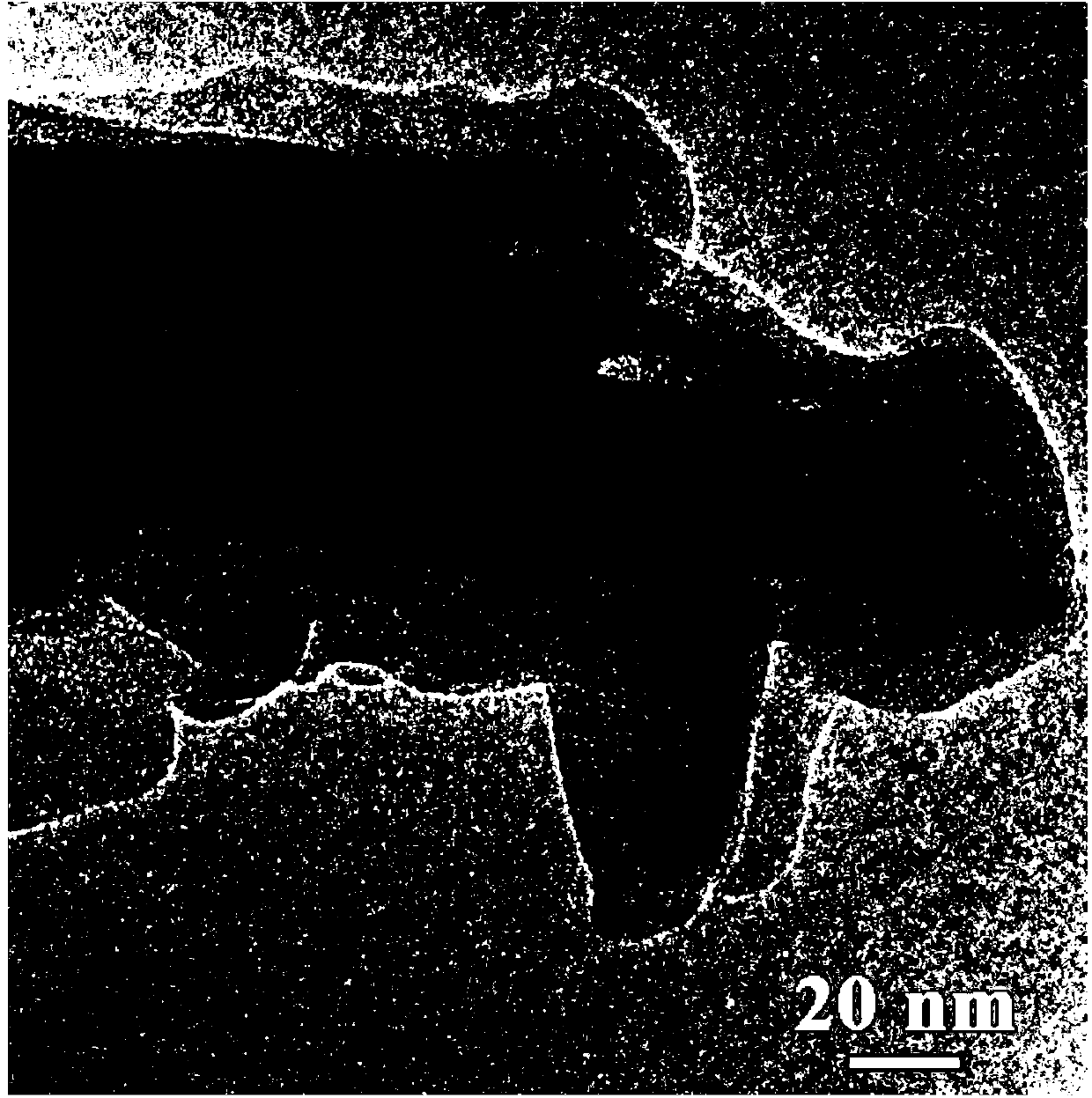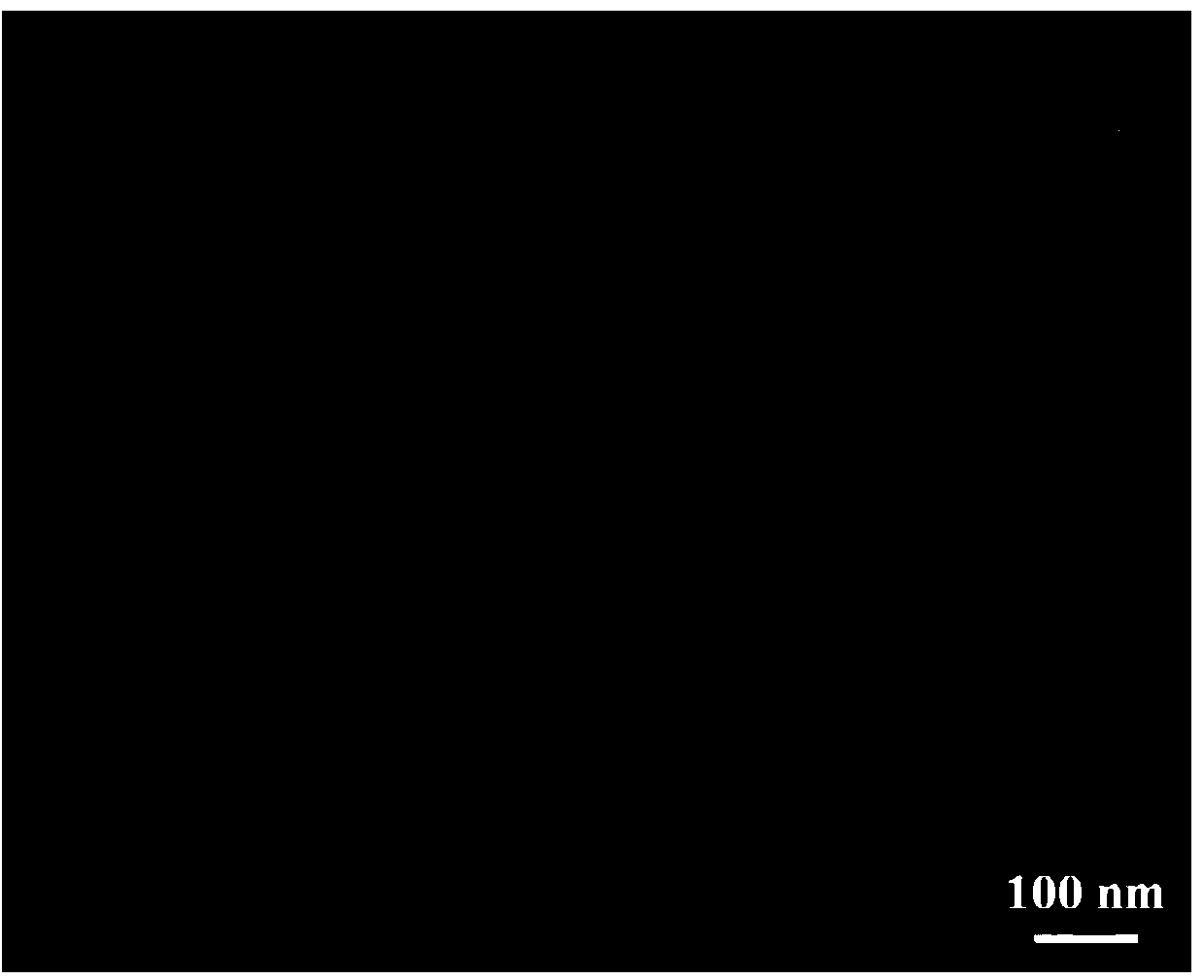Tungsten trioxide/polyaniline core-shell nanowire array radiochromic film and preparation method thereof
A core-shell nano- and tungsten trioxide technology, applied in chemical instruments and methods, nanotechnology, nano-optics, etc., can solve the problems of low specific surface area of ion diffusion, unsatisfactory electrochromic performance, and small spectral adjustment range. Improve the specific surface area, rich variety of color changes, and wide spectrum adjustment range
- Summary
- Abstract
- Description
- Claims
- Application Information
AI Technical Summary
Problems solved by technology
Method used
Image
Examples
Embodiment 1
[0041] 1) Clean the FTO conductive glass (Shenzhen Disprey Photoelectric Material Co., Ltd., Rs≤10ohmTr>85%) with acetone, deionized water and ethanol for 10 minutes, and blow it with nitrogen to get a clean FTO conductive glass ;
[0042] 2) Drop excess concentrated hydrochloric acid (10mol / L) into 1mol / L sodium tungstate aqueous solution until no new precipitates are formed, wash the precipitates with deionized water, and the milky white to pale yellow colloidal precipitates obtained after washing are White tungstic acid, the obtained white tungstic acid is dissolved in an aqueous hydrogen peroxide solution with a mass percentage of hydrogen peroxide of 30%, the molar ratio of white tungstic acid to hydrogen peroxide in an aqueous hydrogen peroxide solution is 1:3, and deionized Water is prepared into peroxide tungstic acid solution containing tungsten at a concentration of 3mol / L, and refrigerated at 4°C for later use;
[0043] 3) Spin-coat the peroxide tungstic acid solut...
Embodiment 2
[0056] 1) Clean the FTO conductive glass (Shenzhen Disprey Photoelectric Material Co., Ltd., Rs≤10ohmTr>85%) with acetone, deionized water and ethanol for 10 minutes, and blow it with nitrogen to get a clean FTO conductive glass ;
[0057] 2) Drop excess concentrated hydrochloric acid (10mol / L) into 1mol / L sodium tungstate aqueous solution until no new precipitates are formed, wash the precipitates with deionized water, and the milky white to pale yellow colloidal precipitates obtained after washing are White tungstic acid, the obtained white tungstic acid is dissolved in an aqueous hydrogen peroxide solution with a mass percentage of hydrogen peroxide of 30%, the molar ratio of white tungstic acid to hydrogen peroxide in an aqueous hydrogen peroxide solution is 1:3, and deionized Water is prepared into peroxide tungstic acid solution containing tungsten at a concentration of 3mol / L, and refrigerated at 4°C for later use;
[0058] 3) Spin-coat the peroxide tungstic acid solut...
Embodiment 3
[0068] 1) Clean the FTO conductive glass (Shenzhen Disprey Photoelectric Material Co., Ltd., Rs≤10ohmTr>85%) with acetone, deionized water and ethanol for 10 minutes, and blow it with nitrogen to get a clean FTO conductive glass ;
[0069] 2) Drop excess concentrated hydrochloric acid (10mol / L) into 1mol / L sodium tungstate aqueous solution until no new precipitates are formed, wash the precipitates with deionized water, and the milky white to pale yellow colloidal precipitates obtained after washing are White tungstic acid, the obtained white tungstic acid is dissolved in an aqueous hydrogen peroxide solution with a mass percentage of hydrogen peroxide of 30%, the molar ratio of white tungstic acid to hydrogen peroxide in an aqueous hydrogen peroxide solution is 1:3, and deionized Water is prepared into peroxide tungstic acid solution containing tungsten at a concentration of 3mol / L, and refrigerated at 4°C for later use;
[0070] 3) Spin-coat the peroxide tungstic acid solut...
PUM
| Property | Measurement | Unit |
|---|---|---|
| Length | aaaaa | aaaaa |
| Thickness | aaaaa | aaaaa |
Abstract
Description
Claims
Application Information
 Login to View More
Login to View More - R&D
- Intellectual Property
- Life Sciences
- Materials
- Tech Scout
- Unparalleled Data Quality
- Higher Quality Content
- 60% Fewer Hallucinations
Browse by: Latest US Patents, China's latest patents, Technical Efficacy Thesaurus, Application Domain, Technology Topic, Popular Technical Reports.
© 2025 PatSnap. All rights reserved.Legal|Privacy policy|Modern Slavery Act Transparency Statement|Sitemap|About US| Contact US: help@patsnap.com



